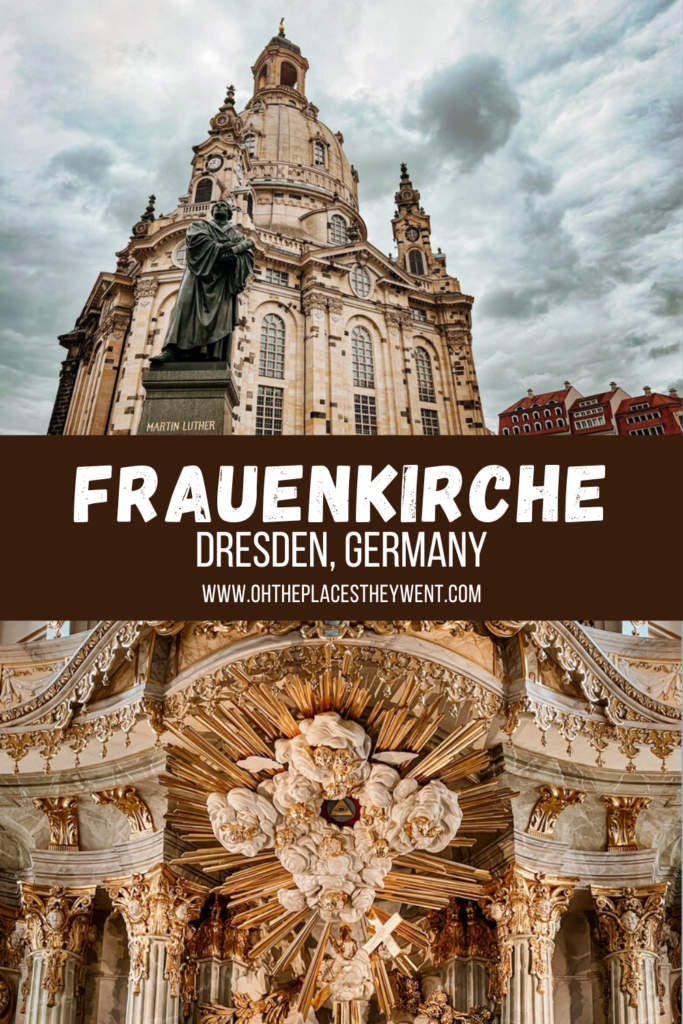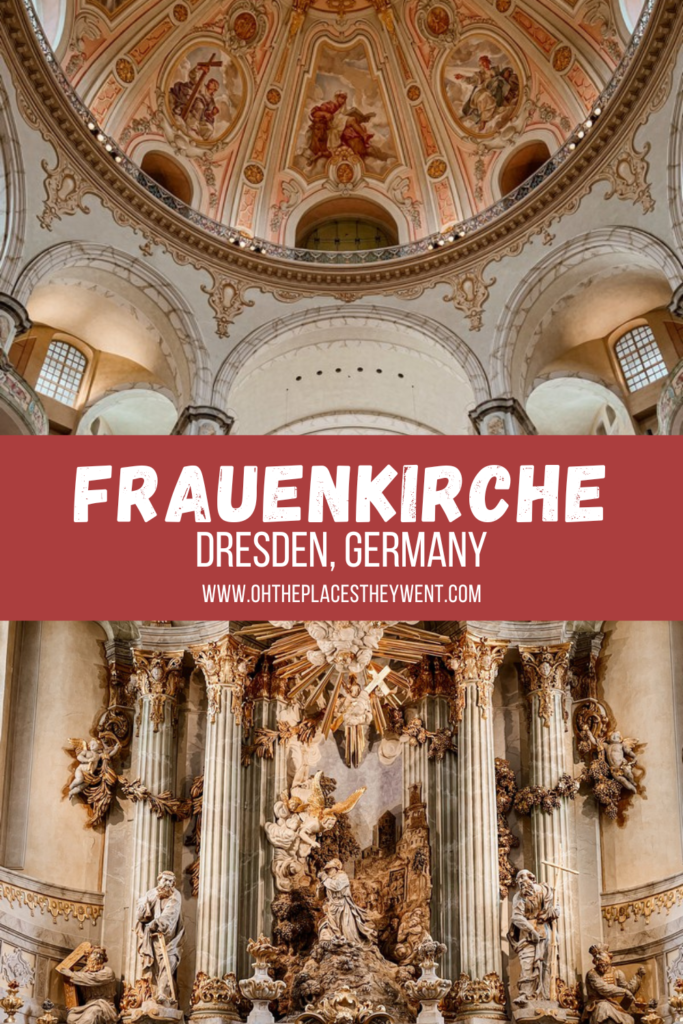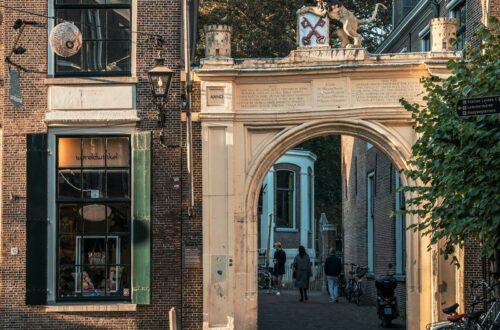From Ruins to Radiance: The Inspiring Tale of Dresden’s Frauenkirche
We’d joined a walking tour of Dresden and the first stop, just to see the exterior at first was the iconic Church of Our Lady, or Frauenkirche. The surrounding plaza was empty so it was just just us and views of this stunning towering facade.
A few hours later as our route circled back and we had learned more about the history of Dresden, Germany, we stepped foot inside.
After the stories of sheer destruction we’d heard and seeing the pictures of the rubble of Frauenkirche which sat for 45 years after WWII before being rebuilt to what it is today, the beauty was overwhelming. What a show of hope and resilience.

A visit to Dresden, Germany must include a stop to Church of Our Lady. Here’s what to know:
- Basic Info
- Centuries of Stories: Fast Facts
- The Stone Bell: Engineering Marvel and War Survivor
- Rebuilt Stone by Stone
- A Living Monument
- A Symbol of Hope and Resilience
(This post contains affiliate links, which means I receive a certain percentage of a sale if you purchase after clicking at no cost to you. Thank you for your support.)
Basic Info
- Address: An der Frauenkirche, 01067 Dresden, Germany
- Hours: Monday – Friday: 10:00am ~ 11:30am and 1:00pm ~ 5:30pm; Saturdays and Sundays have varying times
- Experience the church with organ music, psalm prayers and spiritual words: Monday – Satuday: 12:00pm & Monday – Wednesday, Friday: 6:00pm
- Admission: Free
Centuries of Stories: Fast Facts
The Church of Our Lady began its journey in the 11th century as a small Roman Catholic church, situated just outside Dresden’s city walls and surrounded by a quiet graveyard.
During the Reformation, it transitioned to a Protestant church, only to be replaced in the 18th century with the magnificent Baroque structure we associate with it today.
Designed by Dresden’s city architect, George Bähr, construction spanned from 1726 to 1743, though Bähr tragically did not live to see the completion of his masterpiece.
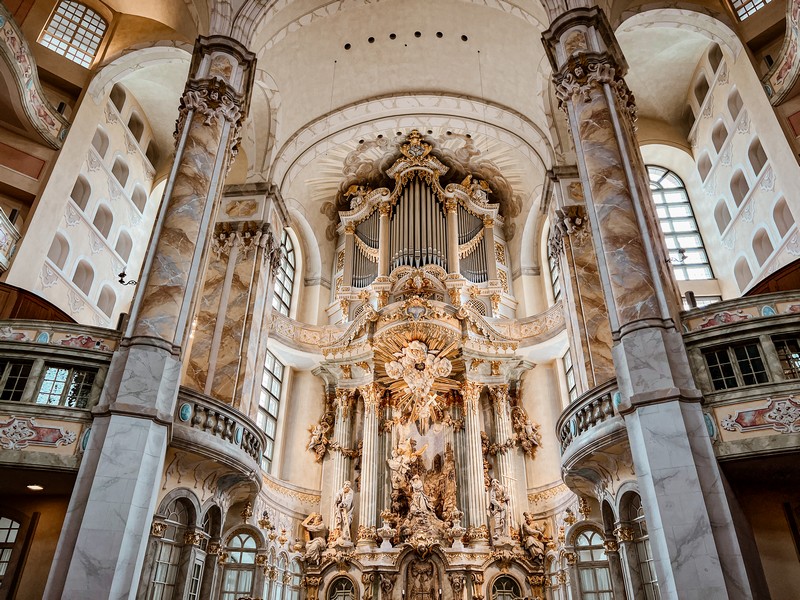
The Stone Bell: Engineering Marvel and War Survivor
One of the church’s most distinctive features is its 96-meter-high dome, nicknamed the “Stone Bell” (die Steinerne Glocke). A marvel of 18th-century engineering, this massive sandstone dome weighs 12,000 tons and rests elegantly on eight slender supports. It is one of the largest domes in Europe.
It was a design that stirred skepticism about its stability. Apparently, there were people that thought it would crumble immediately, but it didn’t!
Fun Fact: The frescos painted around the dome are scenes of the four evangelists Matthew, Mark, Luke, and John and allegories of the virtues of belief, love, hope, and mercy.
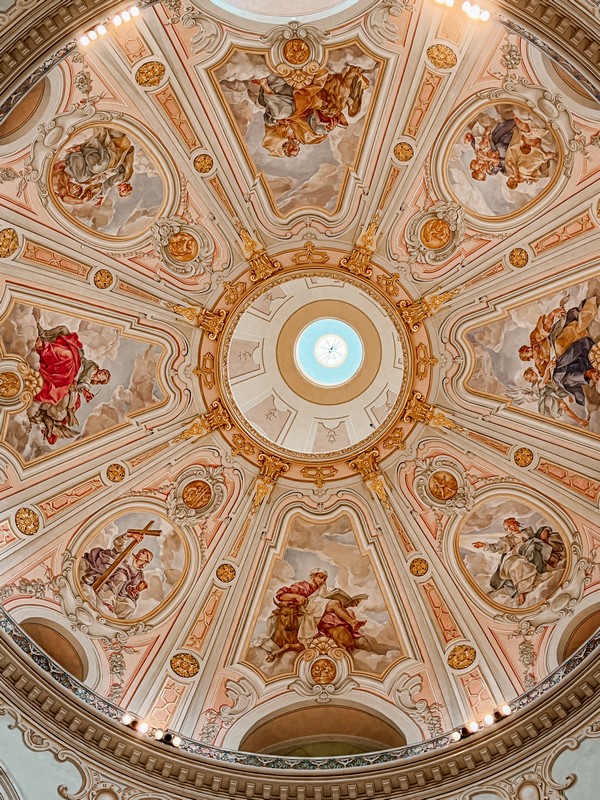

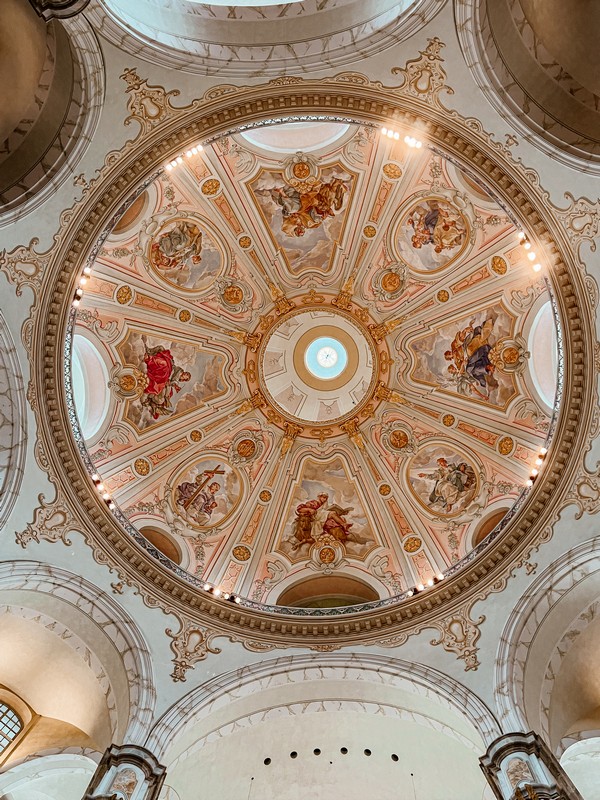
The dome withstood the test of time, even shrugging off over 100 cannonballs during the Seven Years’ War. Unfortunately, the church’s endurance came to an end in 1945 during the bombing of Dresden in World War II.
The church was able to withstand the first two days of bombing and locals sought refuge at the church. Eventually, after 650,000 bombs, the heat led to the collapse of the building. The rubble was left in a haunting pile for over 50 years.
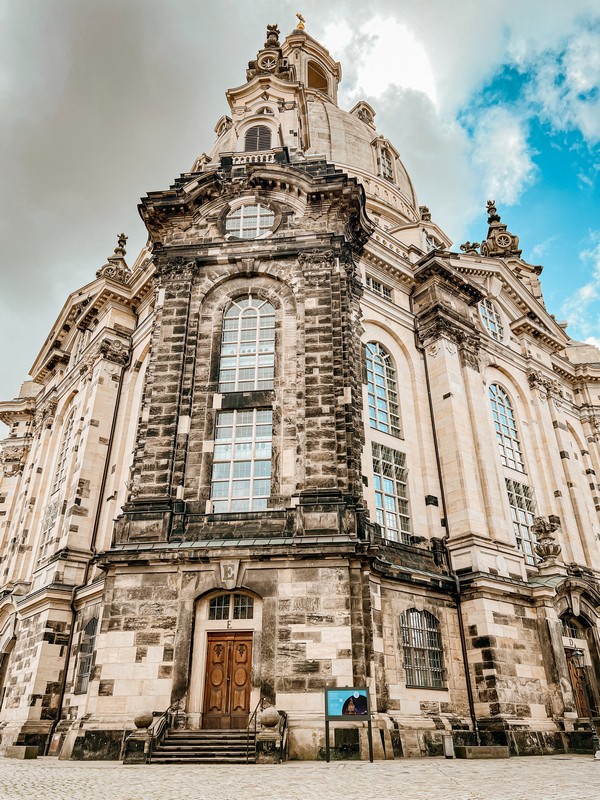

Rebuilt Stone by Stone
When reconstruction began in 1994, it was like piecing together an puzzle. Around 3,800 original stones were salvaged from the rubble and carefully reintegrated into the new structure.
It’s easy to spot these original stones as darkened patina stands in stark contrast to the newer sandstone.
Fun Fact: Our guide said that the clear contrast of the stones is not permanent. Over time, all the stones will weather and turn black, erasing the visible distinction between old and new.
Reconstruction efforts were painstakingly precise. Builders used original 18th-century plans, advanced 3D imaging, and even crowd-sourced old photographs to recreate intricate details like the oak doors.
Thousands of photographs, wedding albums, and memories helped breathe life back into this Dresden icon.
Fun Fact: Rebuilding the Frauenkirche cost €180 million, much of it raised through global donations. Even Nobel Prize winner Günter Blobel donated his prize money to the restoration effort and England’s Prince Edward supported fundraising via the Dresden Trust.

A Living Monument
The Frauenkirche was finally completed in 2005, in time for Dresden’s 800th anniversary in 2006. The gilded orb and cross atop its dome, crafted by British artisans, add a shimmering beacon of hope to the Dresden skyline.
Interestingly, the craftsman who forged the cross, Alan Smith, was the son of an airman involved in the bombing of Dresden—a powerful act of reconciliation.


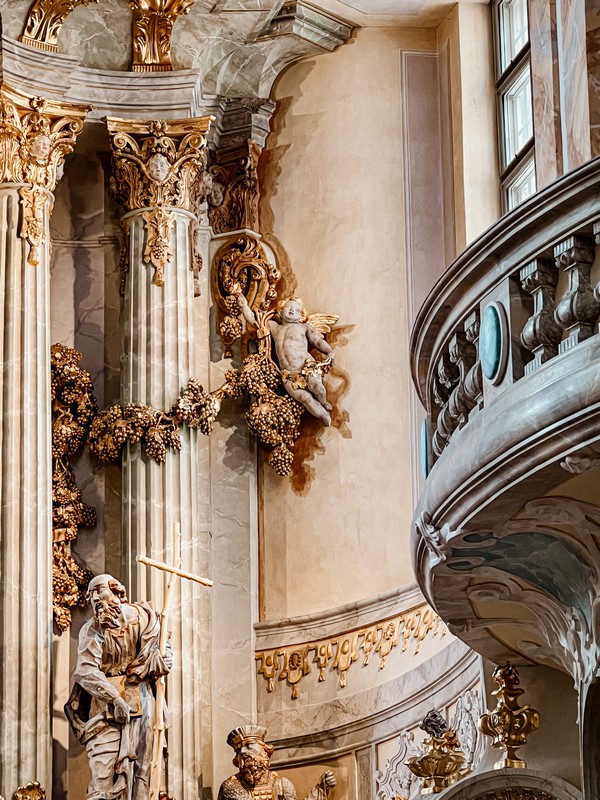
The baroque altar inside is a masterpiece and in the rebuild, they were able to utilize 80% of the original materials to put it back together. You’ll want to take a seat to give yourself time to take it all in.
Created by sculptor Johann Christian Feige, at the center is a Christ praying alone in the Garden of Gethsemane while his disciples sleep and soldiers are already approaching from the city gate to capture him.
Fun fact: Inside, the Baroque interior glows with soft, luminescent colors created using traditional techniques that included mixing paint with eggs—just like in the 18th century.

The original organ, completed in 1736, was considered one of Gottfried Silbermann’s greatest works and shortly after it was completed Johann Sebastian Bach himself gave a concert on it. Unfortunately, it was completely destroyed in 1945.
The new organ you can see today at the Frauenkirche was built in 2005 by the company Kern in Strasbourg. There are 4,876 pipes with the smallest measuring less than 10 centimeters and the largest over 5 meters. Only a small part of these is visible though.
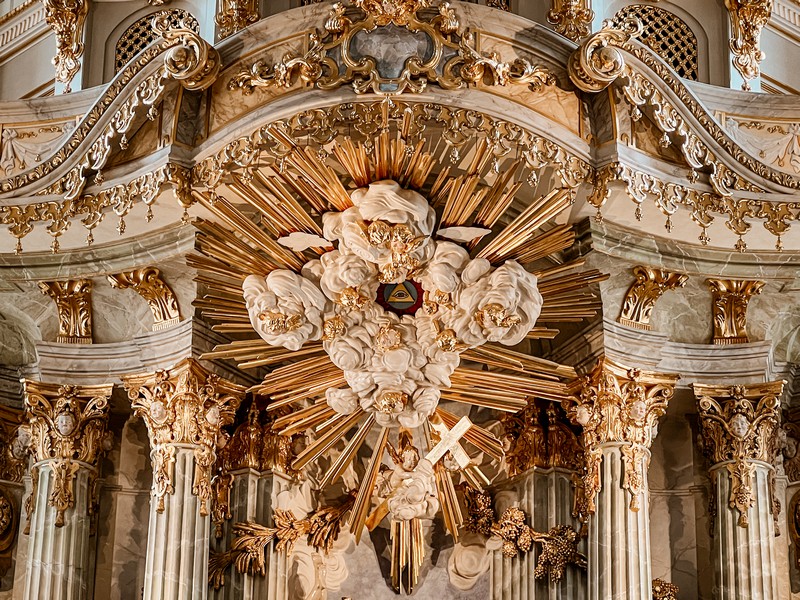
A Symbol of Hope and Resilience
The Frauenkirche is a monument to resilience and hope. From its dramatic rise out of the ashes of World War II to its meticulous restoration, it is here today thanks to determination and unity. It is a must visit in Dresden.
If you can join a tour to hear the amazing stories, I highly recommend it to gain more insight into what you’re seeing. A visit to the Frauenkirche will mean so much more when you understand the history of this iconic place in Dresden, Germany.
Did you like this post? Pin IT!
